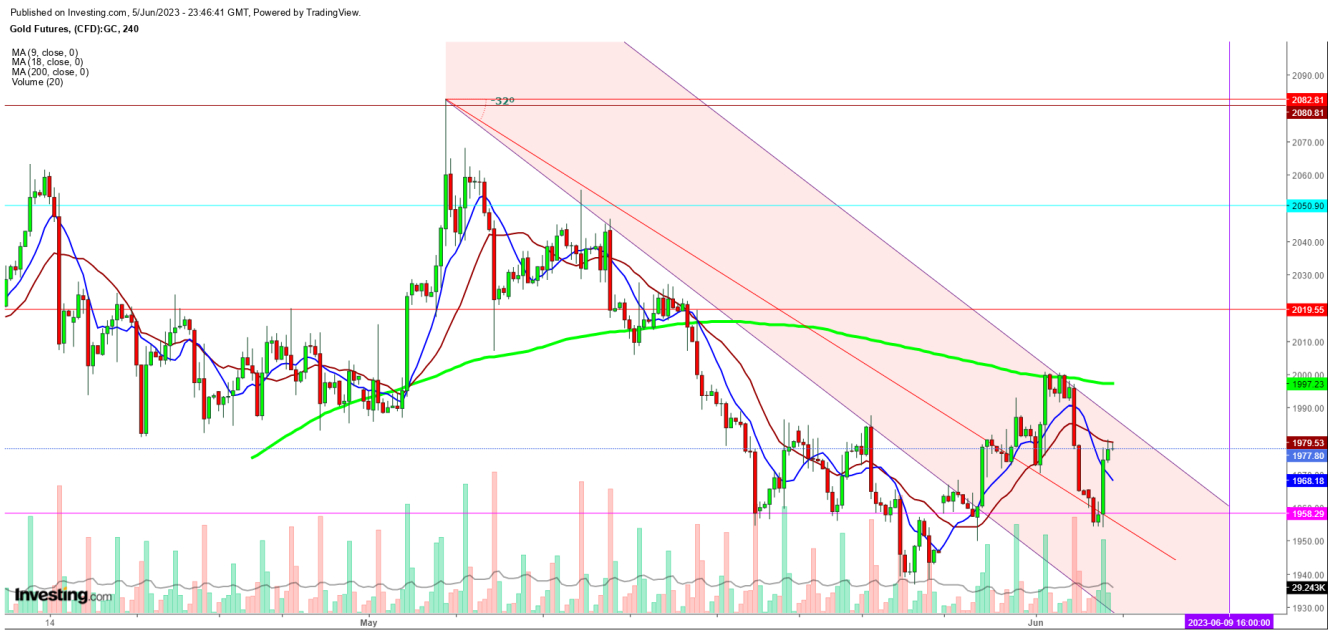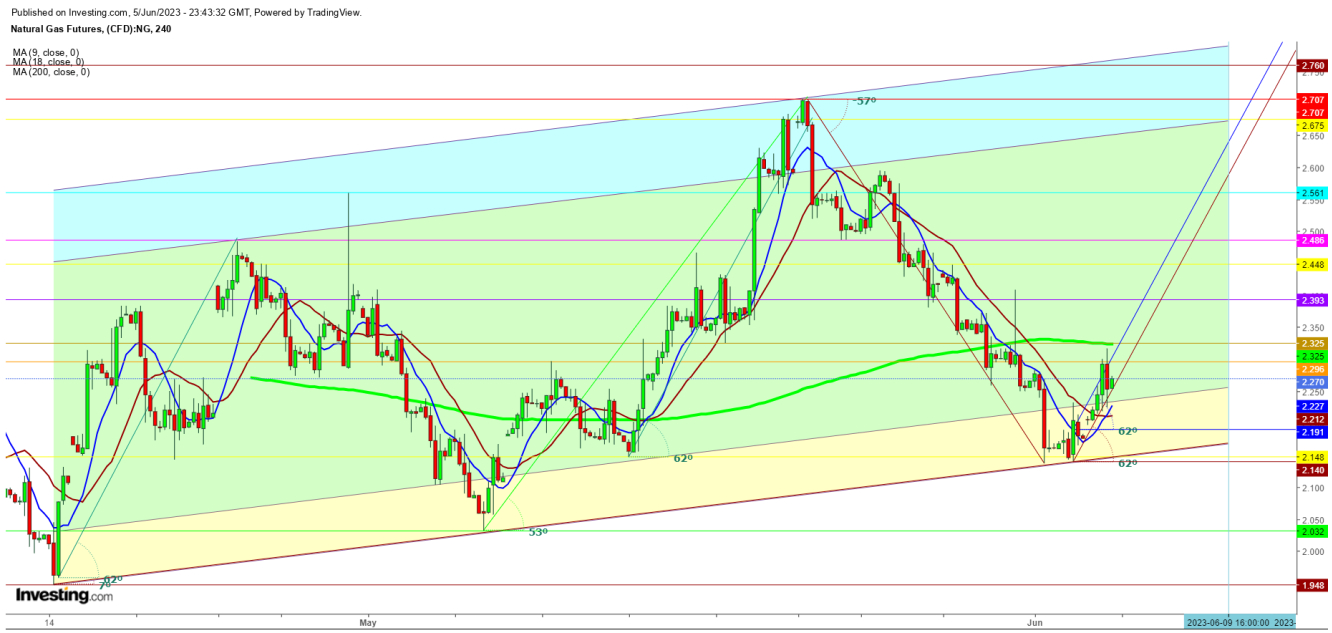The movements of gold and natural gas futures appear poised to behave in opposite directions due to common factors, with the most significant one being the debt ceiling suspension. This suspension sparked a rally in risk assets on Thursday, which subsequently affected natural gas prices on Friday.
The debt ceiling suspension, passed by the Senate late on Thursday, could continue to influence commodity prices until June 13-14, when the Fed will announce its final decision. Surprisingly, despite unusual weather conditions in the first half of June, natural gas futures have shown bullish movements.
In contrast, gold futures displayed considerable strength last Thursday after finding support at $1979. However, they encountered strong resistance at $2000 and began to decline shortly after the Senate suspended debt ceiling limits.
The ultimate direction of both commodities will become apparent after the Fed's decision. Nevertheless, gold and natural gas prices will likely continue to fluctuate. Investors can expect an update on the global economic outlook when the World Bank releases its latest projections for global growth on Tuesday, followed by the OECD with its own forecasts a day later.

From a technical perspective, the 4-Hour chart for gold futures indicates a significant increase in selling pressure. The futures have faced strong resistance at the 18-day moving average (DMA), currently at $1079, since the formation of a bearish crossover below the 200 DMA, which stands at $1997.
If gold futures experience a breakdown below $1937, bears could become more aggressive in the upcoming week leading up to the Fed's meeting.

Technically, movements in natural gas futures are likely to trend upward as bears reached a low of $2.140 on June 1, 2023. This low is higher than previous lows tested by natural gas futures since April 14, 2023, at $1.948. This upward trend indicates a potential surge in bullish momentum expected during the second half of June.
However, until June 11, natural gas futures may continue to face increasing selling pressure due to weekend data suggesting low national demand through June 12-13, as most regions in the US experience comfortable temperatures ranging from the 60s to 80s.
Disclaimer: The author of this analysis does not hold any position in natural gas and gold futures. Readers should take trading positions at their own risk, as both are the most liquid commodities in the world.
